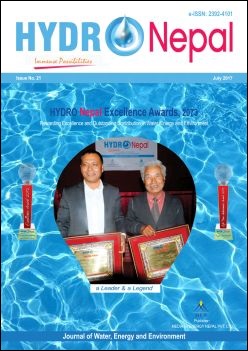The Adoption of the Declaration of the Principles on the Grand Ethiopian Renaissance Dam and Lessons for South Asia
DOI:
https://doi.org/10.3126/hn.v21i0.17817Keywords:
Transboundary River, Riparian states, Downstream benefit principle, Co-operationAbstract
This paper discusses how an upper riparian country can establish its water right of fulfilling own water needs through development of a transboundary river in a contested terrain of water management. Citing the case of the development of Grand Ethiopian Renaissance Dam (GERD) and adoption of the Declaration of the Principles by the Eastern Nile Basin States, this paper highlights the major lessons that South Asia need to learn to achieve water security in the region through cooperation. This paper further argues that if, economically weak upstream riparian country, Ethiopia can initiate such an important and strategic project, then Nepal must also be in similar position to fulfill own demand without causing significant harm, rather benefiting the downstream countries. Like Egypt and Sudan, the lower riparian countries Bangladesh and more importantly India need to be in a position to acknowledge the downstream benefit principle. This paper states that without cooperation among riparian states of the Ganges basin, the sustainable development of the region seems limited.
HYDRO Nepal Journal
Journal of Water Energy and Environment
Issue: 21, July, 2017
Page: 17-24
Upload Date: July 18, 2017
Downloads
Downloads
Published
How to Cite
Issue
Section
License
The copyright of the articles and papers published is held by HYDRO Nepal Journal.
The views and interpretation in this journal are those of author(s), and HYDRO Nepal does not bear any responsibility for the views expressed by authors in the journal.




